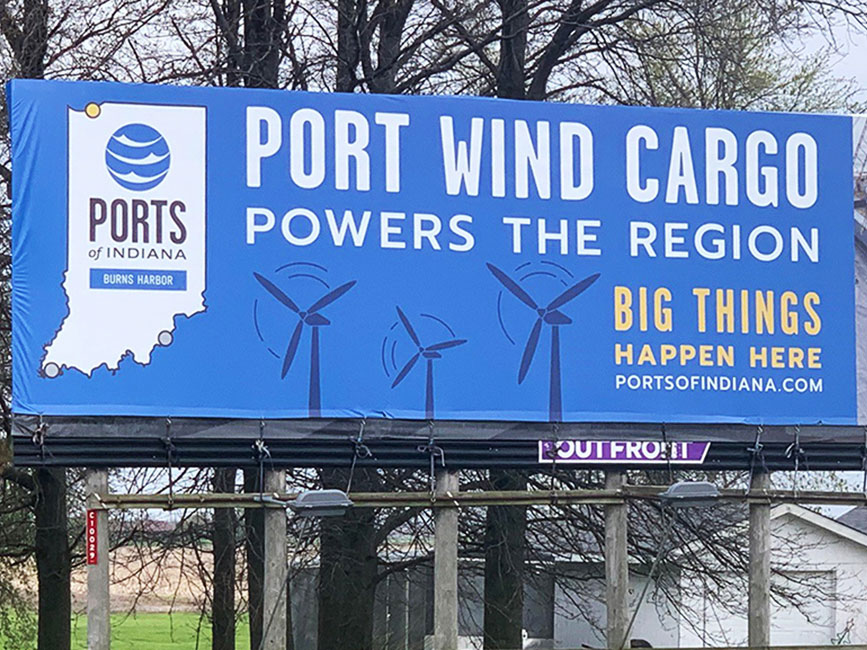You admire them; photograph them and can’t stop looking at the enormous wind turbines. Have you ever wondered how they got there? Ports of Indiana wants to help with that education. The Ports of Indiana-Burns Harbor has posted a new billboard on I-65 south in the middle of Indiana’s beloved wind farms, to help make the connection. (See a picture from the road. Address is 4740 W 1150 S, Brookston, IN - south of SR 18)

“Port Wind Cargo Powers the Region.” Here’s how it happens in Burns Harbor… Most of our wind turbine components are imported from Europe on huge ocean vessels through the Great Lakes/St. Lawrence Seaway to the Ports of Indiana-Burns Harbor. From there, port stevedore Federal Marine Terminals (FMT) unloads the cargo (blades, hubs, nacelles, drive trains, etc.) and they are loaded onto semi trucks. The trucks deliver the wind components (“the last mile”) to wind farms across Indiana and beyond and are then assembled.
"The Ports of Indiana handles a diverse range of cargo every year that has an $8.2 billion economic impact on Indiana's economy," said Vanta E. Coda II, Ports of Indiana chief executive officer. "The wind turbines are a great example of cargo from our Burns Harbor port landing right here in Indiana benefitting Hoosiers."
Wind turbines and components are most easily transported by ship because this mode of transportation can handle the massive size of wind cargos. Vessels are also the least disruptive mode of transportation and cost effective. However, trains and trucks are also a huge part of this multimodal transportation process. The Great Lakes region is the wind cargo hub of North America and the catalyst of renewable energy nationwide. Ports of Indiana-Burns Harbor is a valuable piece to this multimodal shipping process.
There are 65,000 wind turbines across the United States that generate clean, reliable power. These turbines efficiently power homes, businesses and cities or can store for future use.
Fun facts: Many wind turbines stand 300+ feet tall (same as Statue of Liberty). One wind blade is typically 120 feet long and weighs 7+ tons.











